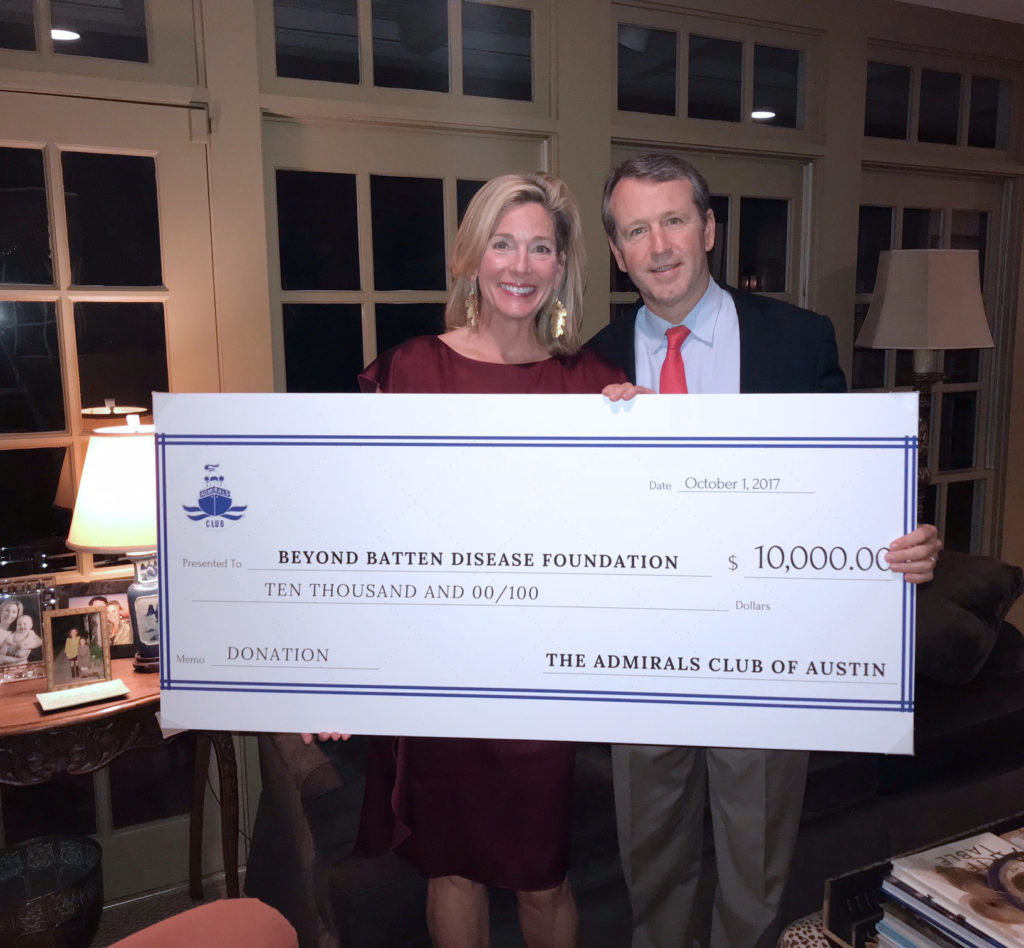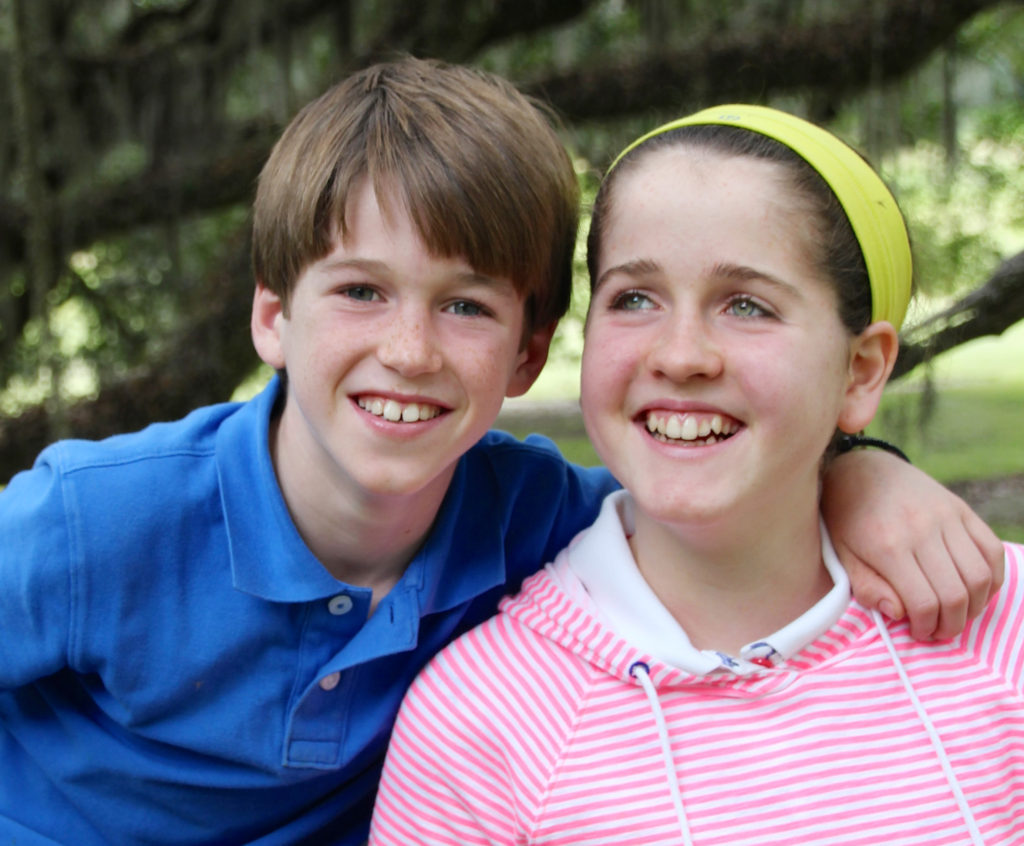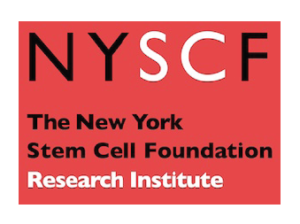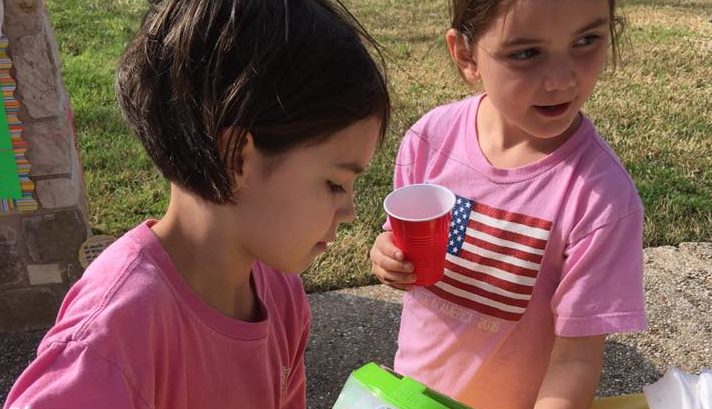Admirals Club of Austin donates $10,000 to BBDF

We are so grateful for the incredibly generous donation made to Beyond Batten Disease Foundation by the Admirals Club of Austin!

We are so grateful for the incredibly generous donation made to Beyond Batten Disease Foundation by the Admirals Club of Austin!

Below is an article that was written at the beginning of October. It’s a great summary of Garland’s effort to help his sister, Christiane. At the time of the writing, Garland’s fundraising total was about $90,000 and we are excited to report that his total is now over $151,000!
Garland Benson, a freckled-face 12-year-old with a winning smile, is on a mission – one that’s very personal, but could have far-reaching implications.
He just needs a little help from 100,000 friends and strangers.
Here’s why: Garland’s 15-year-old sister, Christiane, has juvenile Batten disease, a rare, fatal, inherited neurological disorder. It’s the same disease that was responsible for the July deaths of three siblings over the course of three days in Utah.
Children with the incurable disease suffer progressive vision loss, commonly followed within a couple of years by seizures and, as time passes, the loss of motor functions and speech. That’s followed by premature death, usually in the late teens or early 20s.
In 2008, the parents of Garland and Christiane, Craig and Charlotte Benson, formed the non-profit Beyond Batten Disease Foundation (www.beyondbatten.org) with the goal of helping find a cure. Through research funded by the foundation, progress is now being made on a treatment that, although not a cure, could slow down the disease’s progression, perhaps buying time for young people like Christiane.
The foundation is trying to raise $6 million that’s needed to help hurry that research along by getting it through an expensive validation and development process so that it can receive FDA approval for clinical trials.
Enter Garland, a boy with a big heart for his sister and an understanding that small gifts can add up to extraordinary amounts if the multiplication factor is large enough.
“I decided to raise $1 million of that $6 million on my own,” he says. “If I can get 100,000 people to give $10 each I’ll have $1 million. I think we can easily do that.”
With his goal clear, Garland confidently set out in March to achieve his objective – and do whatever he could for his sister and other young people who have the same disease.
Many donors have left heartfelt messages for him, such as: “Garland, you are the sweetest, best brother a girl could have.” “You inspire me to make a difference.” “Thank you for blessing your sister and so many others.”
Garland quickly found that his self-imposed undertaking wasn’t quite as easy as he hoped, but he has persevered and so far has raised about $90,000. His optimism isn’t faltering yet.
“I think it would be amazing if we find a cure,” Garland says.
Although Batten is genetic, and families can have more than one child with the disease, Garland does not have it. He’s not a carrier either, so he can’t pass it on to his children.
Despite the disease, Christiane is a cheerleader, has joined her family on ski trips and on horseback-riding adventures, and continues to be an inspiration for her younger brother.
“It’s really cool how she can do all that stuff and not be able to see,” Garland says. “But what I’d really like is for her to be able to lead a normal life like me.”
About Garland Benson
Garland Benson, 12, lives in Texas and is trying to raise $1 million to help fund research into juvenile Batten disease, which afflicts his sister, Christiane. The money is being raised through the Beyond Batten Disease Foundation (www.beyondbatten.org), which was launched in 2008 by the parents of Garland and Christiane, Craig and Charlotte Benson. The foundation’s goal is to help eradicate the disease by raising awareness about Batten and helping to fund research that could eventually lead to a cure. Those who want to donate can text the word HERO to 501051 and $10 will be added to their next cell phone bill. Donations can also be made through Garland’s donor page on the Beyond Batten Disease Foundation’s website.

We would like to give our heartfelt gratitude to First Lady Cecilia Abbott for opening her home to allow BBDF to share the message about Batten disease and the treatment in sight. Attendees were allowed to tour the beautiful Governor’s Mansion. We are proud to be part of cutting-edge research going on in the great state of Texas.
BBDF’s 2016/2017 Annual Report is filled with research updates, inspiration, donor recognition and highlights. Read the full report HERE.
See the video that Texas Children’s Hospital put out about Christiane and Beyond Batten Disease Foundation and the work being done at the Jan and Dan Duncan Neurological Research Institute.

The New York Stem Cell Foundation (NYSCF) and Beyond Batten Disease Foundation (BBDF) today announce the availability of a unique and comprehensive collection of juvenile Batten (CLN3) disease induced pluripotent stem (iPS) cells. The two organizations partnered to develop this resource for scientists around the world. The collection is a key example of BBDF’s strategy to advance therapy development for Batten disease by creating and disseminating cutting-edge tools and other resources with game-changing potential.
|
BBDF has partnered with Texas Children’s Hospital (TCH) to provide informational videos on the work being done at the Jan and Dan Duncan Neurological Research Institute (NRI) in Houston, TX. In this video Dr. Marco Sardiello dives into BBDF funded research and the discovery of TFEB and it’s effects on lysosomal storage diseases, including Batten disease. |

Take a look at our May Newsletter filled with event recaps, upcoming events in June and where we are today with the Be Project!

Our supporters shared the love this February! Be sure and keep up with the Be Project by subscribing to our monthly newsletter!

Keep up with the Be Project every month by subscribing to our monthly newsletter!